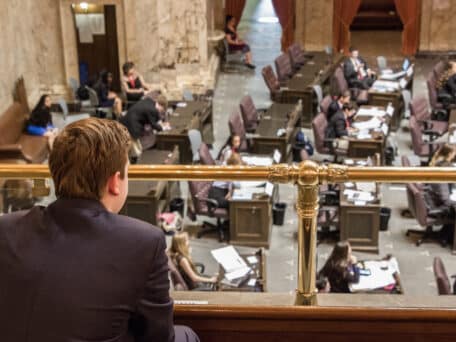The Washington Education Association (WEA) spent most of the 2015 legislative session demanding that lawmakers fund full-day kindergarten and fully fund its so-called smaller class size (read “money grab”) initiative, I-1351. The WEA got what it wanted in terms of the former demand. As part of the state budget, the Legislature included funding for the immediate statewide implementation of full-day kindergarten.
And, it’s already backfiring.
It appears that not all school districts will be able to take advantage of the state’s full-day kindergarten funding this year, “which goes first to schools with the highest percentage of students eligible for free or reduced-price lunches.” According to recent reports, two elementary schools in Mead and one in Central Valley “turned down state money for full-day kindergarten programs because they don’t have enough room.” The Spokesman Review,
“Six districts that qualified for the program had to turn down money the state was offering. Farwell and Brentwood Elementary in the Mead School District don’t have the capacity yet to handle full-day kindergarten, which would mean an extra classroom in each. It already has full-day kindergarten at Shiloh Hills Elementary and will accept the money to expand it at Evergreen Elementary this fall.”
Fully funding the WEA’s I-1351 runs much the same risk. Some schools have already struggled to meet the Legislature’s mandates to reduce class sizes. Evergreen Height Elementary in Auburn has been forced to hold some classes in the library, the gym and a new portable. The school gym actually accommodates two classes. Regular gym classes can no longer be held inside. Understandably, parents of children who have been designated to these makeshift classes are worried.
As Washington Policy Center has pointed out, I-1351 would force more schools to create makeshift classes in order to meet new standards. Of course, the WEA isn’t all that concerned with the consequences of its demands. That’s probably because the WEA would stand to profit $1,000—via forced union dues every year—from each of the new hired staff necessary to make I-1351’s so-called smaller class size promise possible. Meanwhile, working families would be hit with an even heavier tax burden. But, insists the WEA, it’s all “for the children.”




